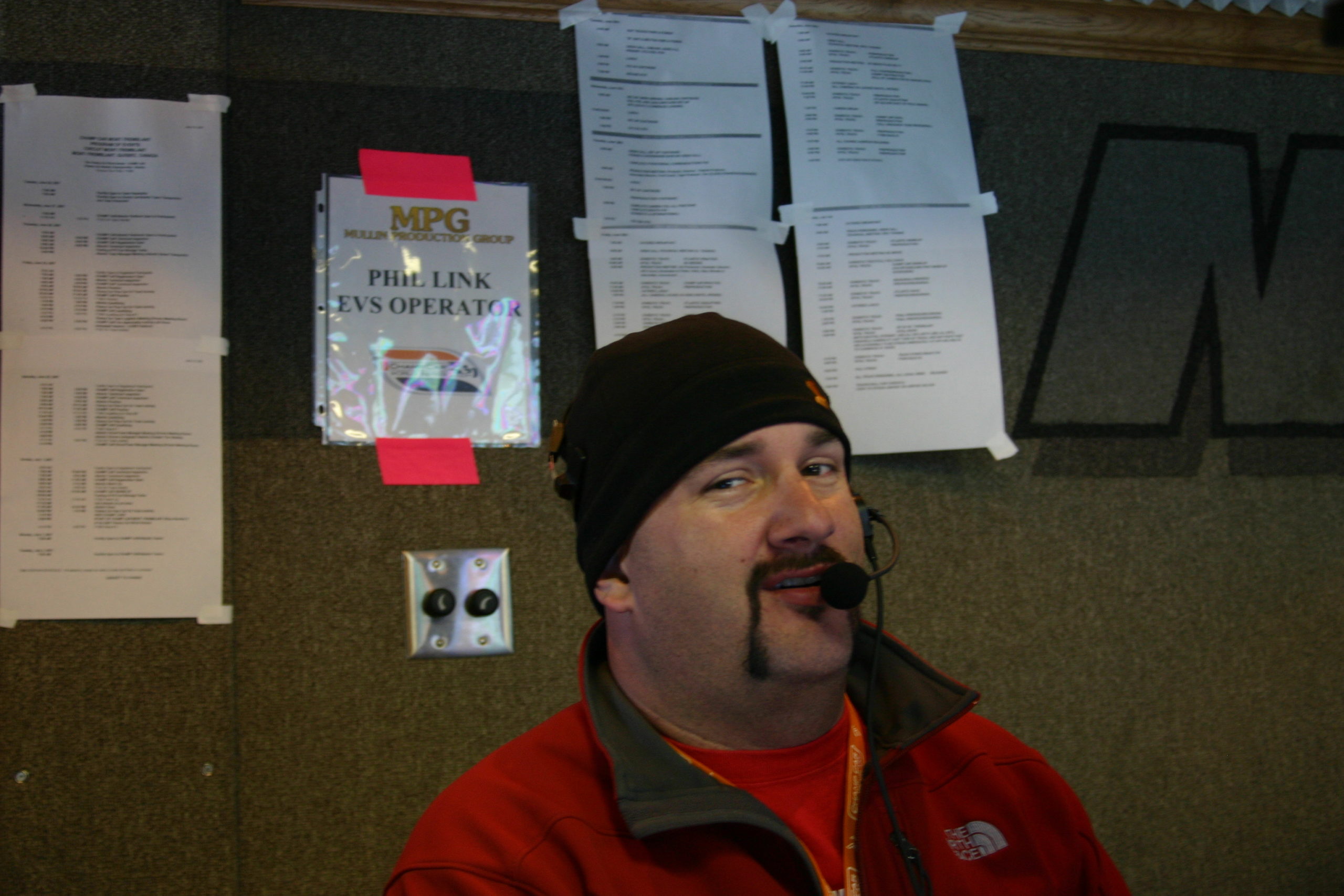
Episode 002 – Phil Link
Phil Link has been a freelance editor and replay operator for over 20 year. He has worked may marquee events. He also graciously created the graphics for this podcast. Phil currently lives with his wife and children outside of Milwaukee, Wisconsin.
In the second episode of Behind The Camera, Phil shares his experiences working the 2007 Fiesta Bowl and 2008 Super Bowl.
Watch the episode here: https://youtu.be/hh8C8nAVfpA
Notes from the Show
1-Inch Machine and Beta SP
Wikipedia history of videotape
3X Mini-Mo and 700 frames
In television, the frame rate is measured against 30 frames per second so a 3X mo camera records at 90 frames per second. Mini is an industry term for a smaller camera that is run hand-held on an operators shoulder rather than a tripod. In the reference to a camera running at 700 frames, this means it was running 23x slower than a traditional replay.
2007 Fiesta Bowl
Wikipedia
2008 Helmet Catch
Wikipedia
A2 – Audio Assistant
Wikipedia
DNF Controls DMAT
DNF Product Page
Dubner 20-K
The 20-K was an RGB graphics generation system that featured 252+ colors and 30+ fonts
VintageTEK History of Dubner
Home Show vs Away Show
In regional sports television, there are two broadcasts generated at each sporting event. The Home Show is produced by the local RSN for the Home Market. The Away Show is a second crew that is produced by personnel from the visiting team’s market (using local technicians) that is transmitted back to the visiting team’s market.
MATC – Milwaukee Area Technical College
School Website
Mike Burkes – Former Fox NFL Producer
Huffpost Article
Phantom Cam
The phantom was one of the first camera systems with an incredibly high frame rate camera that could run 8-20x slower than traditional replays.
Wired Article
Wikipedia
Rich Dewey – College Football Director for Fox Sports
Sony MAV-555 Video Server
The MAV was a digital disk recorder that Sony sold in the early 2000’s. The MAV series was also one of the first recorders to support 4K video.
Skycam
Wikipedia
Sub-switch/Tape release
The largest broadcast switchers built today only have 35 buttons to assign individual sources so when a show is as large as the Super Bowl, a second switcher is utilized to contain the remainder of the tape machines and then the output of that switcher is fed into the main switcher. On many shows, the main switcher doesn’t handle replays at all, rather the sub-switch does all tape machines.
Tape machine called Idaho??
In a typical Sports Television truck, the tape machines are named using letters, colors, and other nouns to avoid confusion with the cameras (which are numbered). On a show as large as the Superbowl there are more machines than letters (and we tend to avoid C, D, etc that sound too close to other letters) so Producers need to get creative so every machine name stands out so they often use crazy names like Idaho, Laser, Aqua, etc.
“Rolls out with it”
In Sports Television vernacular, “rolling out” is a generic term that refers to one or more replay highlights that are played going to a commercial break.
